The semi auto shotgun is everywhere, and why shouldn’t it be? Every time the trigger is pulled, the gun ejects a spent shell and then chambers a new one. You don’t cycle it by hand like a pump gun, and it offers more firepower than an over-under. Modern semi-autos are reliable and can be as light and lively as an O/U.
Invented by John Browning in 1900, the semi automatic shotgun was a success from the beginning, but it didn’t truly take over the shotgunning world until decades later. As great as Browning’s gun was, it took the twin developments of gas and inertia operation in the 1960s to set the semi-auto on the path to shotgun supremacy.
Browning certainly paved the way while also hamstringing designers by patenting every part of the gun he could, including the bolt handle. He didn’t make it easy for other designers to follow in his giant footsteps.
Semi auto shotguns were tricky to design. They could be finicky about ammunition, especially reloads, and had to be kept clean. Frustrated hunters and shooters once called them “jam-a-matics,” but no one calls them that anymore.

Semi-autos work with such reliability now that target shooters rely on them in competition, and high-volume dove lodges use them because they withstand being shot a few thousand times a day. Duck hunters use them because they work in the worst weather and are easy to shoot and reload in the tightest of blinds. Even the U.S. Marine Corps trusts the lives of its Marines to a semi auto shotgun.
Here’s a brief history of the semi auto shotgun.
RELATED – Click-Clack! The Best Shotgun Ammo for Home Defense
The Birth of the Semi Auto Shotgun
Utah’s John M. Browning, the greatest firearms designer of all time, was no stranger to semi-automatic and even fully automatic gun design. He said the semi auto shotgun was his greatest invention. It was also one of the most challenging.
A sporting shotgun has to shoot a wide range of ammunition, from light target loads to heavy hunting loads, whereas guns made for military use fire a standard round.
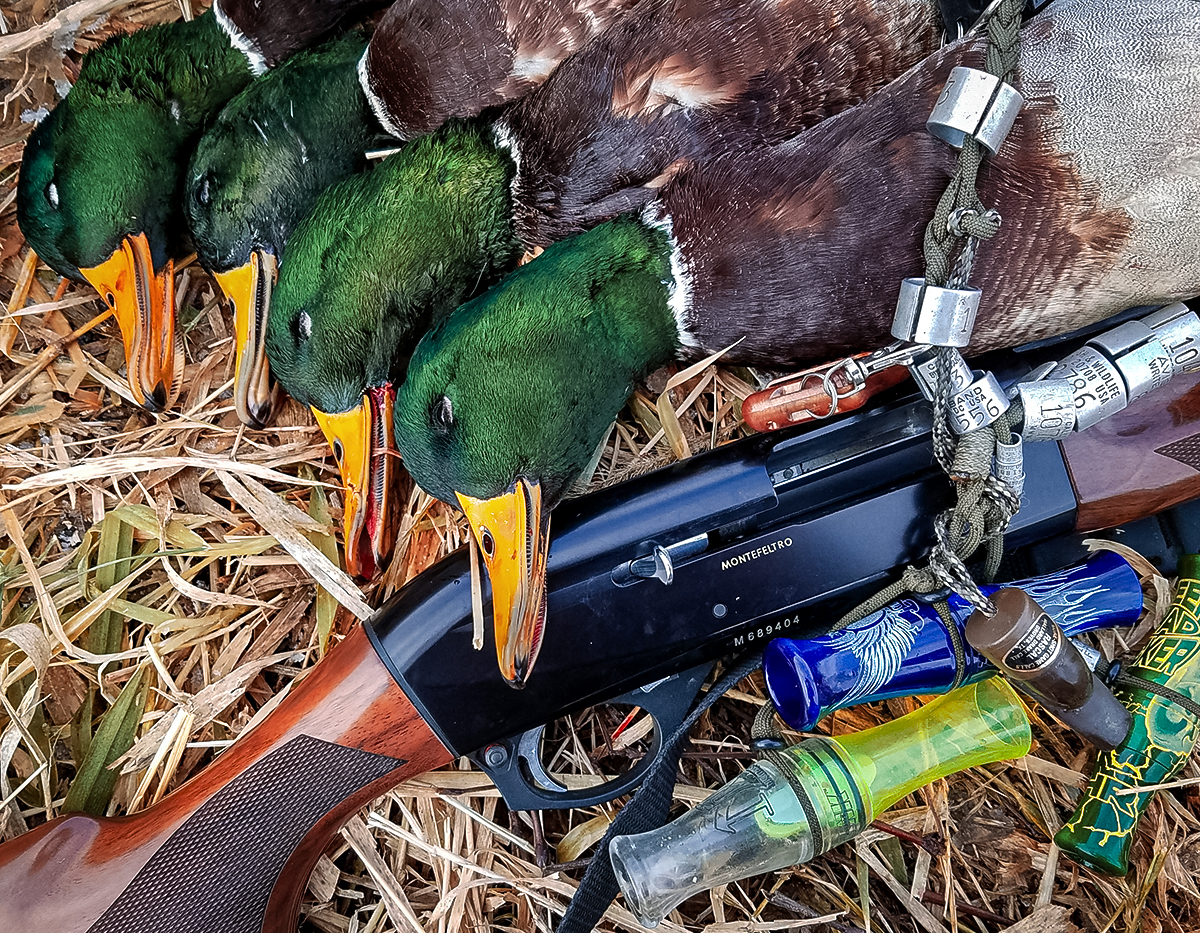
If you tune a semi-auto to work with light loads, it will shoot everything, but the heavier loads drive the bolt back harder and faster, hammering the rear of the receiver and shortening the life of the gun. If you make a gun for heavy loads, light loads often don’t generate enough recoil or expanding gases to work the action.
Browning had already made guns that used expanding gases to cycle the action. However, with the Auto 5, he employed a long-recoil-operated design. The gun’s bolt traveled with the barrel for the full length of the backward stroke, then ejected the empty and chambered a fresh round on the way forward.
Browning used a pair of adjustable friction rings on the magazine tube so the shooter could regulate the gun for light or heavy loads. The shotgun had a square-backed receiver to accommodate the bolt, making it instantly identifiable and earning it the nickname “humpback.”
Browning patented the Auto 5 shotgun in 1899 and tried selling the gun to Winchester, which had purchased most of his designs over the years, including the Winchester 1897, which evolved into the Winchester Model 12 pump action shotgun.
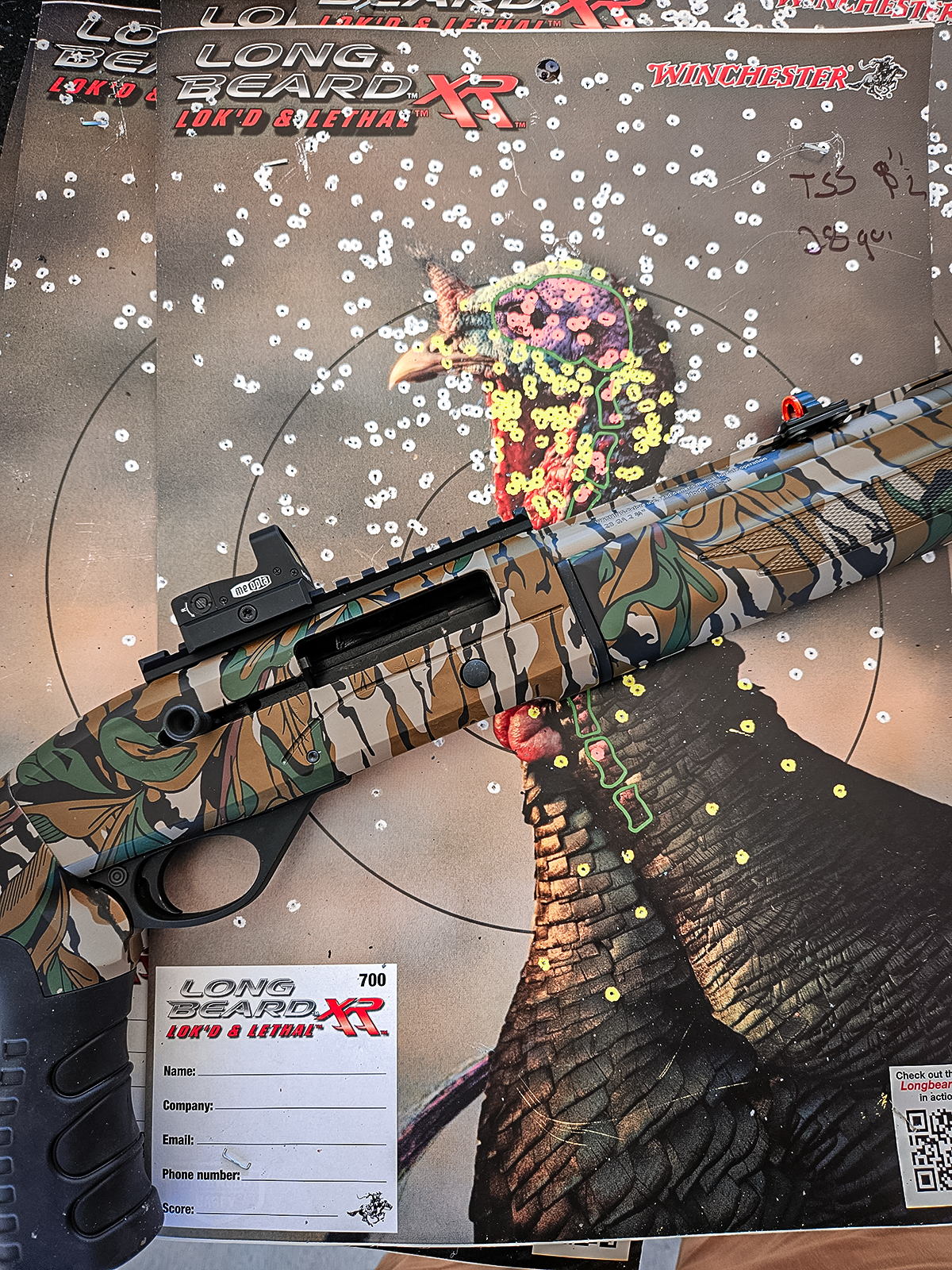
Convinced the gun would be his most successful design, Browning asked for royalties, something he had never done with Winchester before. Winchester — despite owing most of its success to Browning’s designs — foolishly refused.
He also tried to sell to Remington, only to have the company president die of a heart attack while Browning was in his outer office waiting to see him. So, Browning went to Belgium’s FN, which produced a version of his Hi-Power pistol, to have the gun made in Europe. He eventually licensed its production in the U.S. to Remington, which called its version the Model 11, and to Savage, which named its gun the Savage 720.
Two million had been made by the time the Auto 5 was finally replaced in the 1990s.
RELATED – Why the Pump Action Shotgun Still Reigns Supreme
The Auto 5’s Early Competitors
Not only was Browning a firearms genius, but he was also savvy about business. He patented so many parts of the Auto 5 that it was nearly impossible for designers to build a competing gun.
Winchester tried with the Model 1911 shotgun, one of the worst guns ever made, because it had to be designed around Browning’s patents. The Model 1911 had no bolt handle to avoid infringing Browning’s patents. Instead, it had a knurled section on the barrel so you could set the butt on the ground and push down to open the action.
If the gun could potentially go off accidentally when opened that way with a good chance the shooter’s head was near the muzzle. The gun picked up the unfortunate, but not entirely inaccurate, nickname of “The Widowmaker.”
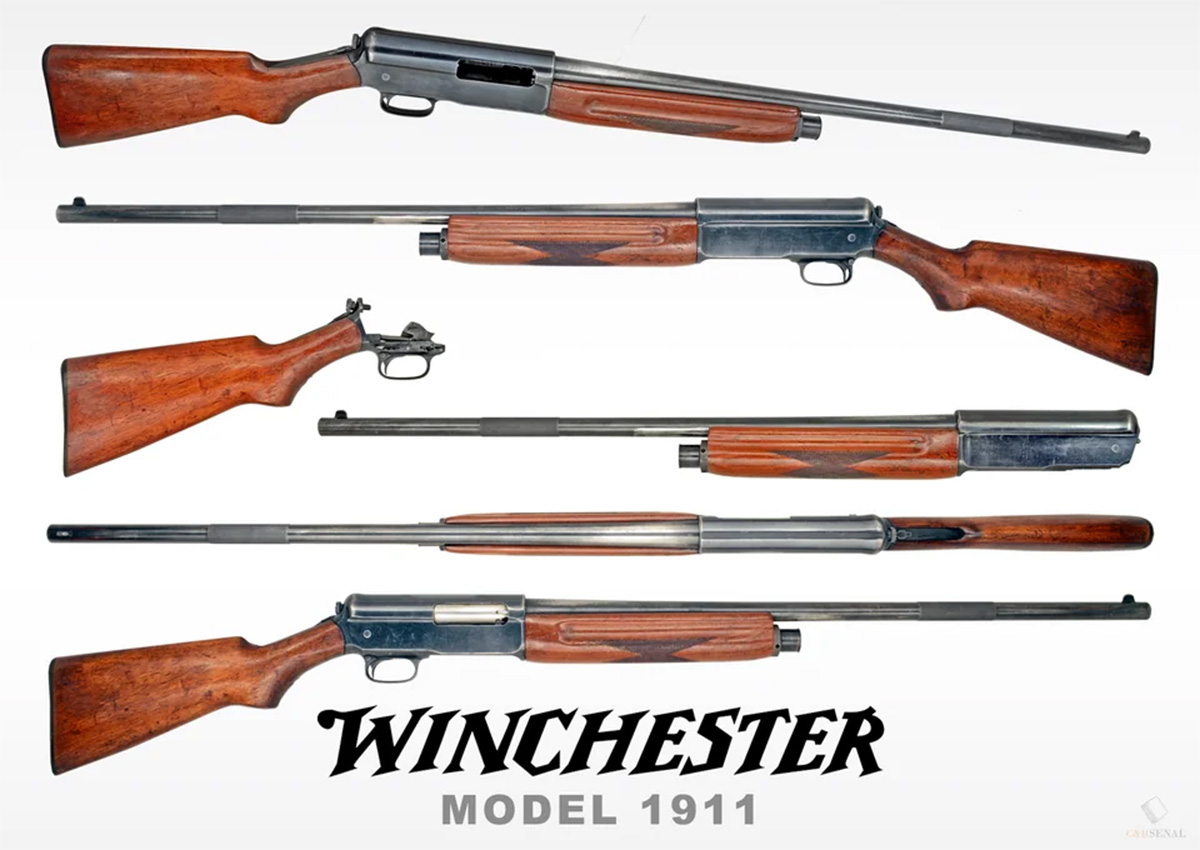
A few years after Browning’s Auto 5 hit the market, a Swedish inventor named Carl Sjögren introduced an inertia shotgun called the “Normal.” The scattergun had a massive bolt that locked tighter as the gun moved back under recoil, then opened as the gun slowed down.
Produced in pretty small numbers in Sweden and Denmark, the gun made little impact on the market. However, decades later, Benelli would succeed worldwide with the inertia principle first explored by Sjögren.
Post-War Innovations to the Semi Auto Shotgun
The Auto 5 and its licensed variants were essentially the only semi auto shotguns until the post-WWII period, which would see a flurry of innovation. Post-war gunmakers drew on lessons about mass production they learned making military weapons.
Pressed and stamped parts made guns cheaper and faster to make. They also learned lessons about making gas-operated automatic and semi automatic shotguns.
Beretta introduced its first gas gun, the Model 60, in 1965. Meanwhile, in the U.S., the J.C. Higgins Model 60, made by High Standard and sold through Sears Roebuck, was the first American-made gas gun in 1956.
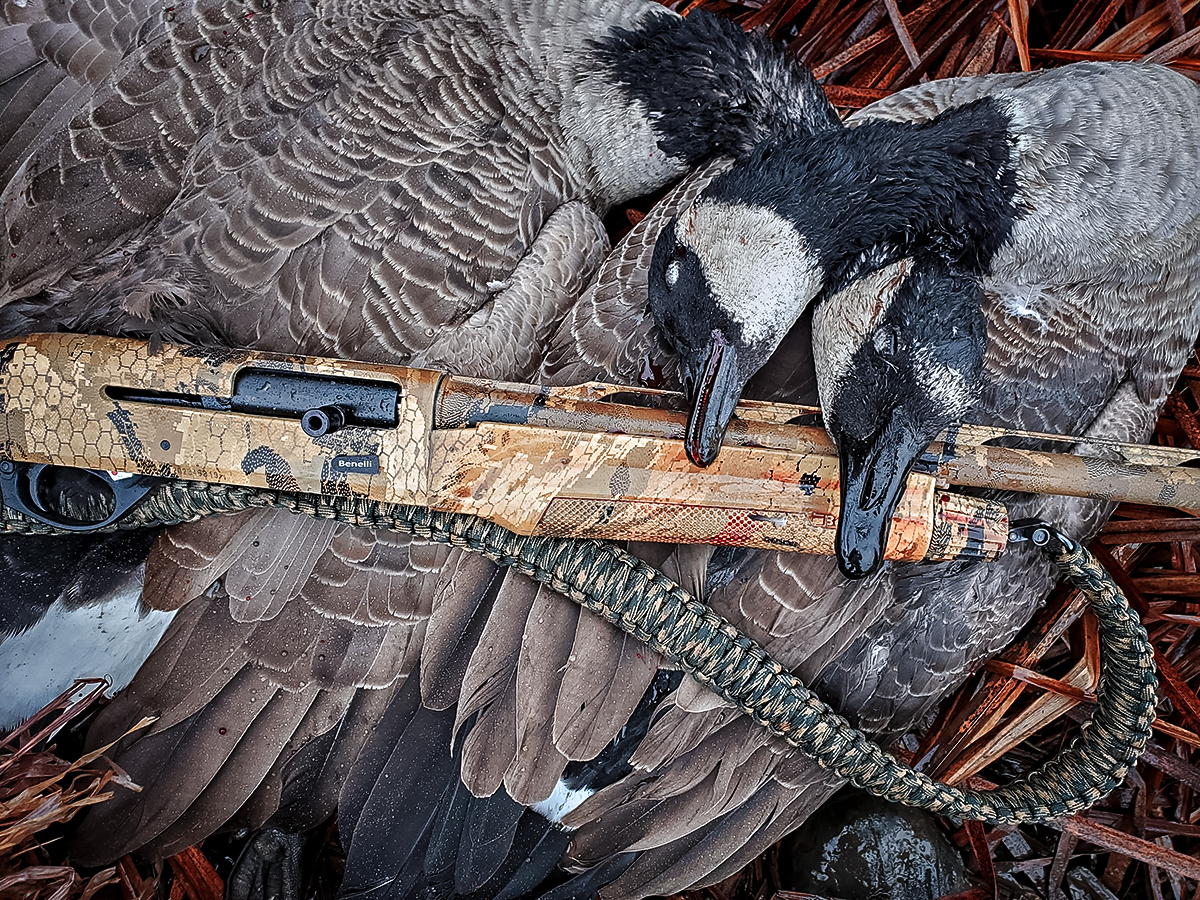
Like almost every gas gun since, both models had ports in the barrel ring that allowed expanding gasses to bleed out of the barrel and push on a piston connected to the bolt by an action bar, beginning the stroke cycle.
Gas operation had one significant advantage — the gun stored and released recoil energy in its moving parts, spreading the recoil sensation. As a result, a gas gun gives your shoulder a push, whereas other action types produce recoil that feels more like a punch. Gas guns are noticeably lighter-kicking than any other shotgun type.
The downside of gas operation is that bleeding gas from the barrel means carbon and fouling build-up in the action. The guns have to be cleaned more often than other semi auto shotgun designs.
Early gas guns could only cycle a narrow range of shells without adjustment. Also, shooting 2 3/4- and 3-inch shells required two interchangeable barrels — one for standard shotshells and one for magnums.
Remington’s first gas semi-auto, the Model 58, appeared on the heels of Berretta’s Model 60. It solved the light-heavy load problem with a magazine cap that could be dialed from “L” to “H” to vent the right amount of gas for cycling light and heavy loads.
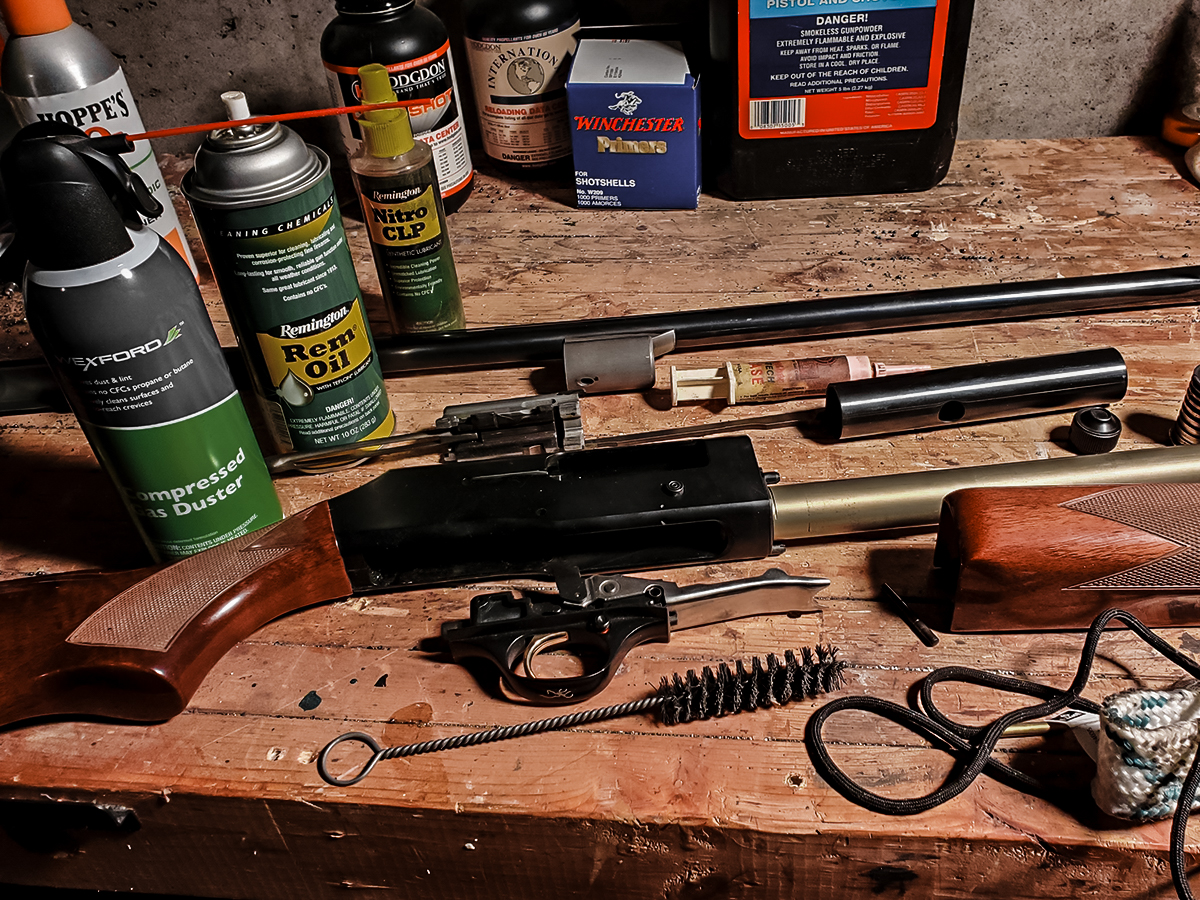
Remington also offered a new take on John Browning’s long-recoil design with the 11-48, a gun that functioned just like the Auto 5 but substituted a sleeker, rounded receiver for the original humpback design.
Several oddball designs emerged in the 1950s. The Browning Double Automatic was a short-recoil operated gun intended for upland use. It held just two shells.
The Winchester Model 59 also had a barrel with a steel liner wound with hundreds of miles of thin fiberglass thread. The result was a barrel that was extremely lightweight yet incredibly strong. The gun had an aluminum receiver to make it even lighter. In 12-gauge, the Model 59 weighed just 6 1/2 pounds.
RELATED – Will the 20 Gauge Shotgun Ever Replace the 12 Gauge?
The Modern Era of the Semi Auto Shotgun
For the shooting public to embrace the gas gun, some gunmakers needed to develop a shotgun that ran more reliably and could go longer between cleanings. In 1963, Remington introduced a semi-auto that fit that description perfectly — the Model 1100.
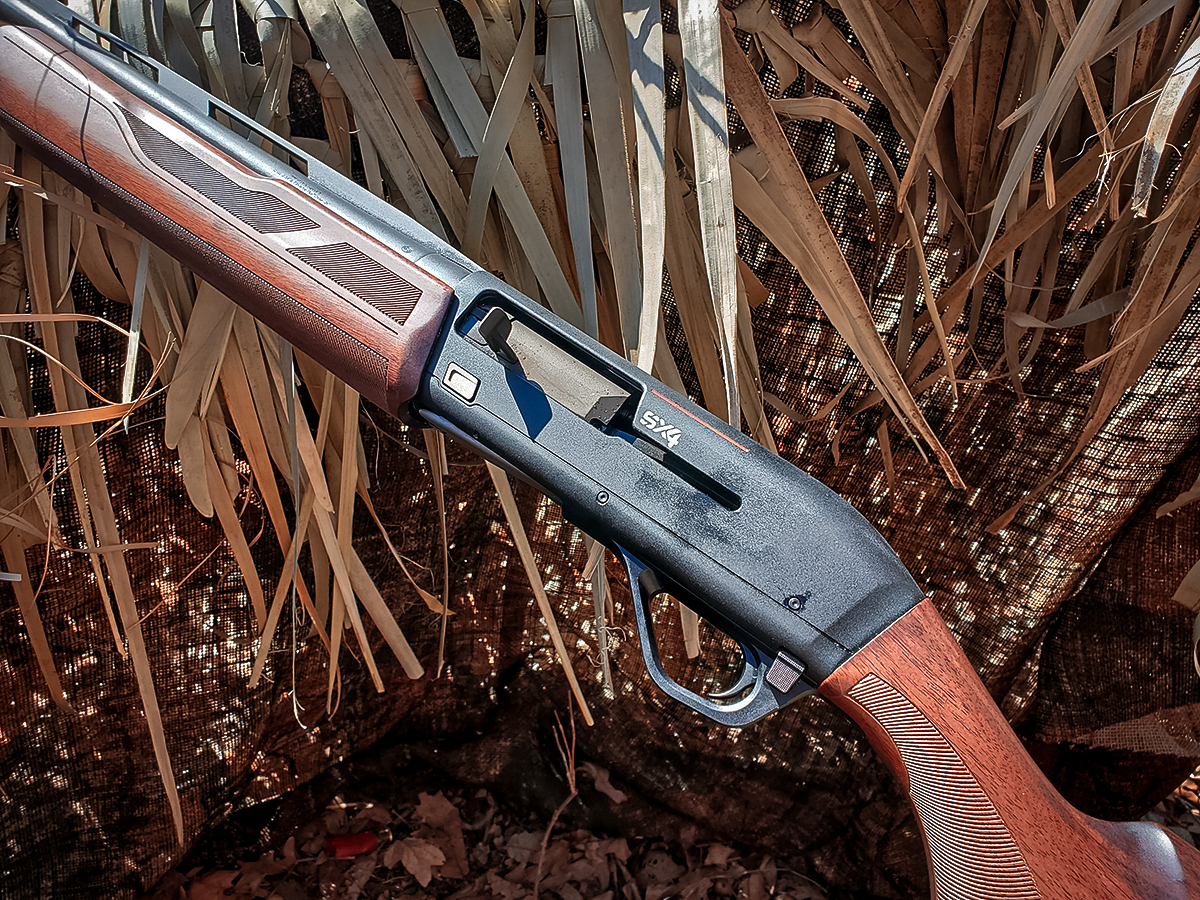
Designed with the aid of computers and mass-produced with stamped, cast, and common parts, the Remington 1100 was the first truly modern shotgun. It was an immediate success. Hunters and target shooters loved the gun’s reliability and soft recoil.
In 1965, Beretta, building on the lessons learned from their Model 60, introduced the first of the great Model 300 series. Beretta refined the series over time to produce some of the best gas guns of all time.
While the Remington 1100 and the Beretta Model 300 were a leap forward in reliability and versatility, they were far from perfect. A shooter still needed a 2 3/4-inch barrel for light loads and a 3-inch barrel for heavy magnums.
Meanwhile, in another part of Italy, the motorcycle-making Benelli family met an engineer named Bruno Civolani, who worked for Italian gunmaker Breda. Civolani had invented a new inertia gun based on the same principle as the Sjögren Normal. Benelli bought a license to make it, and the Benelli name would become synonymous with inertia guns.
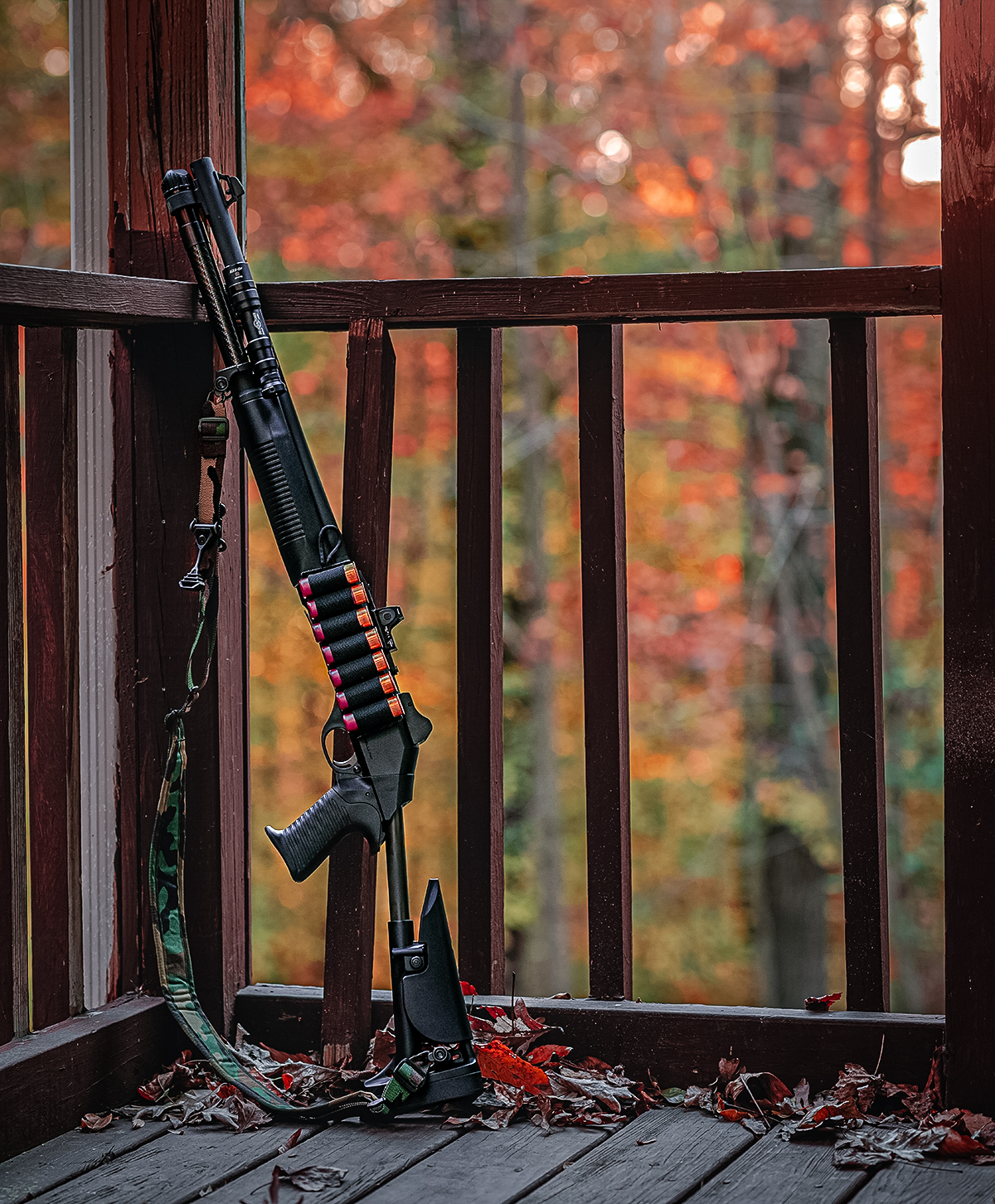
It took more than 20 years after the introduction of the Remington 1100 for gunmakers to design a shotgun that could shoot 2 3/4- and 3-inch shells without an adjustment or barrel change. Benelli’s 3-inch M1 Super 90 came out in 1986. It could shoot 2 3/4- and 3-inch loads.
It would take gas gun designers another year to catch up. Howa in Japan and Remington came out with “all-load” semi-autos in 1987. The guns featured self-metering valves that vented the right amount of gas to cycle the action while maintaining proper bolt velocity. The introduction of the “all-load” semi-autos and the widespread adoption of factory choke tubes made the semi-auto an extraordinarily versatile and shootable shotgun.
A Longer Challenge
A new challenge arose no sooner had the industry figured out the all-load gun. The switch to steel shot for waterfowl in the 1980s drove the development of a super-magnum, 3 1/2-inch 12-gauge shell.
Improving the lethality of pellets that were ballistically inferior to lead meant shooting two or even three pellet sizes larger, which created a need for a bigger hull to hold adequate numbers of big pellets. Mossberg and Federal collaborated on the new 3 1/2-inch shell and a pump gun, the Model 835, to shoot it.
Benelli was the first manufacturer to offer a 3 1/2-inch semi auto shotgun, and the Super Black Eagle became both a household word and a prestige gun among duck hunters. Merely lengthening the chamber wasn’t enough to make a 3-inch semiauto shoot 3 1/2-inch shells. Inertia operation proved easier to adapt to a gun that could fire 2 3/4- to 3 1/2-inch shells.
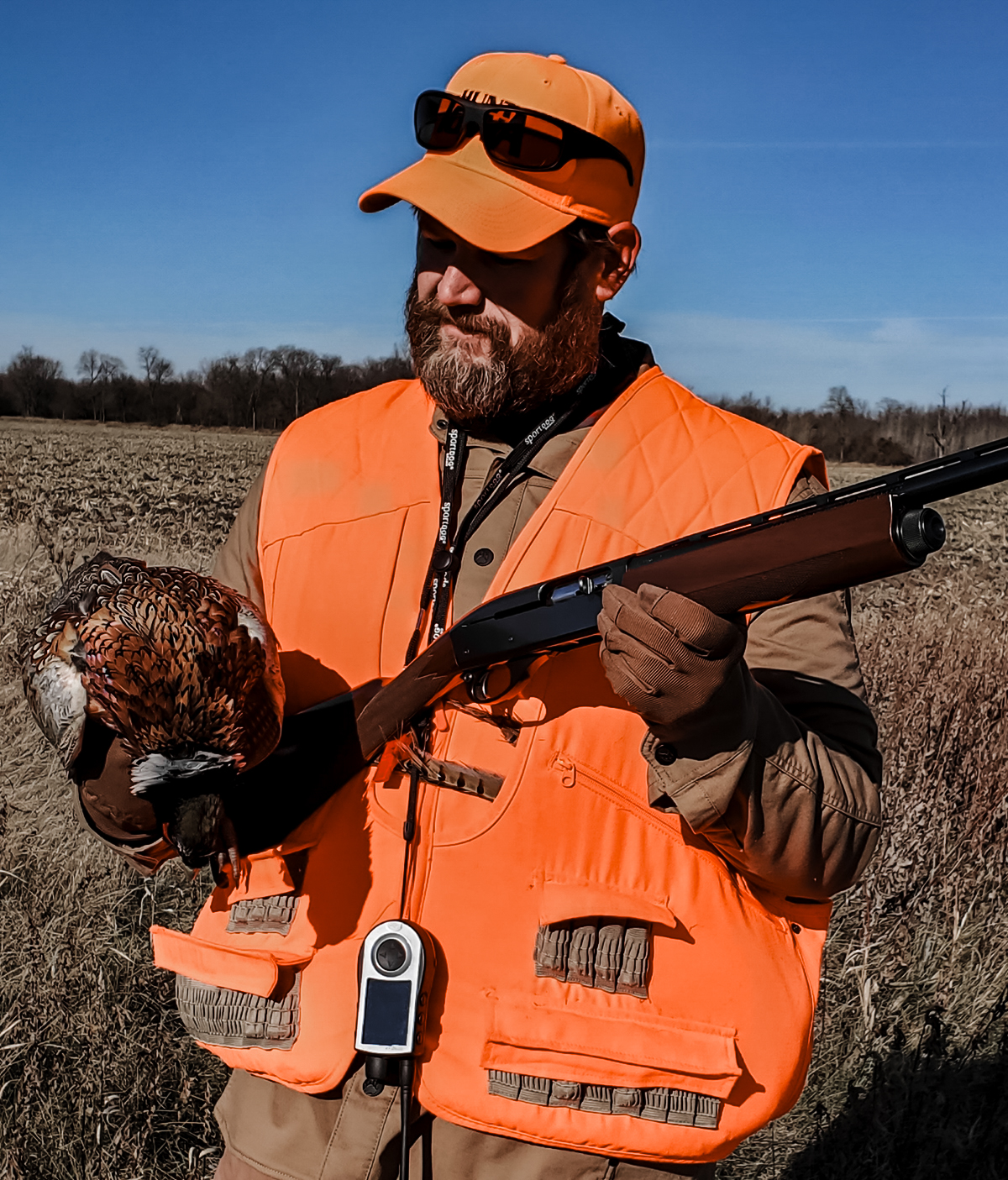
Gas gun makers struggled. Early attempts resulted in guns that didn’t work and even broke parts under the stress of repeatedly firing 3 1/2-inch shells. After suffering major growing pains, the Browning Gold became an excellent 3 1/2-inch semi auto shotgun. It also spawned other great models, such as the Winchester SX series, the Browning Silver, the Beretta A400, and the Gold’s replacement, the Benelli Maxus.
Remington’s VersaMax took a different but very effective approach to shooting all loads. Instead of two ports in the barrel ring and a metering valve, the VersaMax had seven ports staggered throughout the chamber. The longer the shell, the more ports it covered, limiting the gas that bled into the action.
There are still shooters who believe the original Auto 5 remains the best semi auto shotgun ever made. It’s easy enough to find one on the used market and experience the timelessness of Browning’s design for yourself. It’s equally easy to appreciate advances made in the intervening 125 years and buy a semi auto that’s tough, lightweight, soft-shooting, and versatile. There are plenty of guns John Browning would no doubt approve of if he could see them today.
RELATED – The Bolt Action Shotgun: An American Classic That’s Almost Dead
Semi Auto Shotgun FAQs
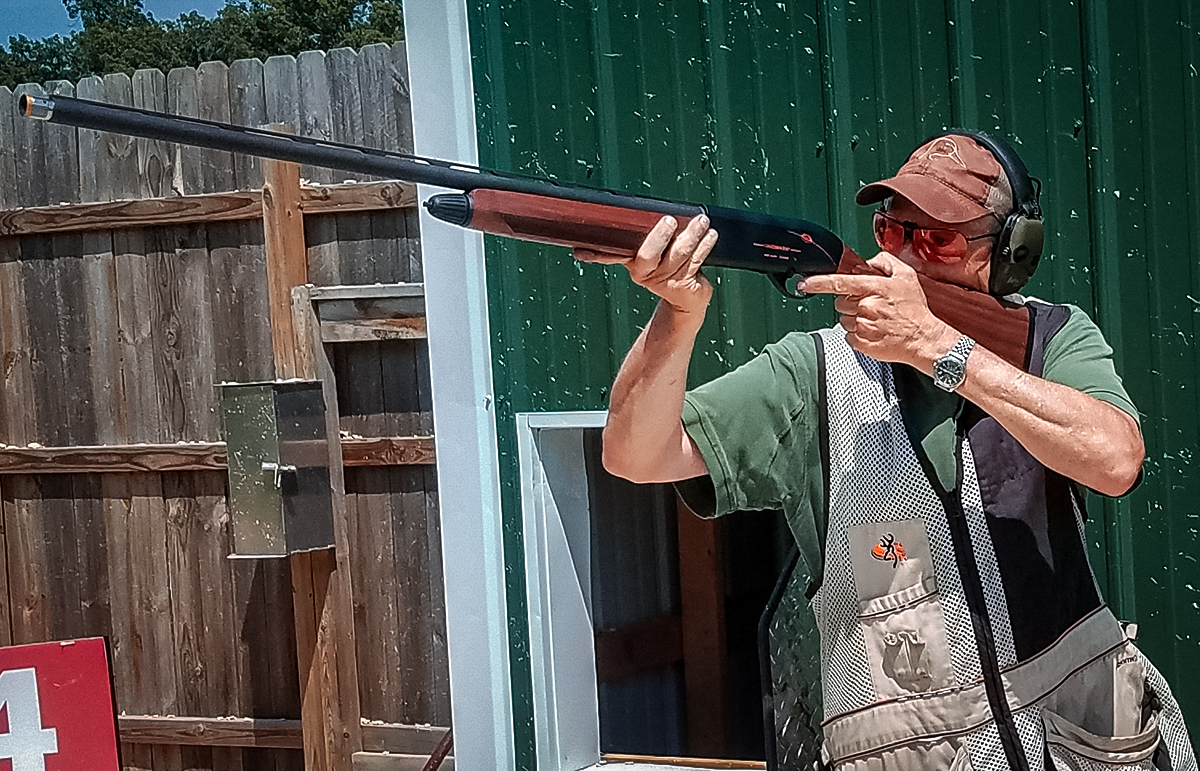
Can a civilian own a semi auto shotgun?
In the United States, there is no restriction on semi auto shotgun ownership. However, some states, and Washington, D.C., do impose limits on a shotgun’s shell capacity or, in the case of
Colorado, the length of an extended magazine tube. Also, to be legal for migratory bird hunting, a shotgun must not be able to hold more than three shells in the chamber and magazine combined. These regulations apply to all types of shotguns, not just semi-autos.
Is a semi auto shotgun worth it?
In recent years, semi auto shotguns have become highly reliable. They do not require manual action cycling like with a pump shotgun. In addition, gas-operated shotguns reduce felt recoil, a major advantage for high-volume or target shooting. There are also some excellent semi-autos available at lower price points.
What shotguns are semi auto?
You can find semi auto shotguns from 10-gauge to .410 bore in any gauge. Currently, most semi autos are either gas or inertia-operated. There are models of both kinds to fit any budget.
Semi auto shotguns are popular for both hunting and target shooting. You can also buy semi auto shotguns in various barrel lengths, from very short barrels for tactical use and turkey hunting to long-barreled clay target guns.
Can you use a semi auto shotgun for home defense?
The Marine Corps uses a Benelli M4 gas semi-auto as its combat shotgun (the military calls it the M1014). Some law enforcement agencies also use the M4. If you choose the right model, maintain it well, and load it with good ammunition, a semi auto shotgun can absolutely serve as a home defense gun.
Although pumps are seen as more reliable due to their manual operation, it is possible, especially under stress, to “short stroke” a pump gun by not pulling the slide completely back, causing a failure to feed. You won’t face that problem with a semi automatic shotgun.
READ NEXT – The Bullpup Shotgun: The Good, the Bad, and the Ugly



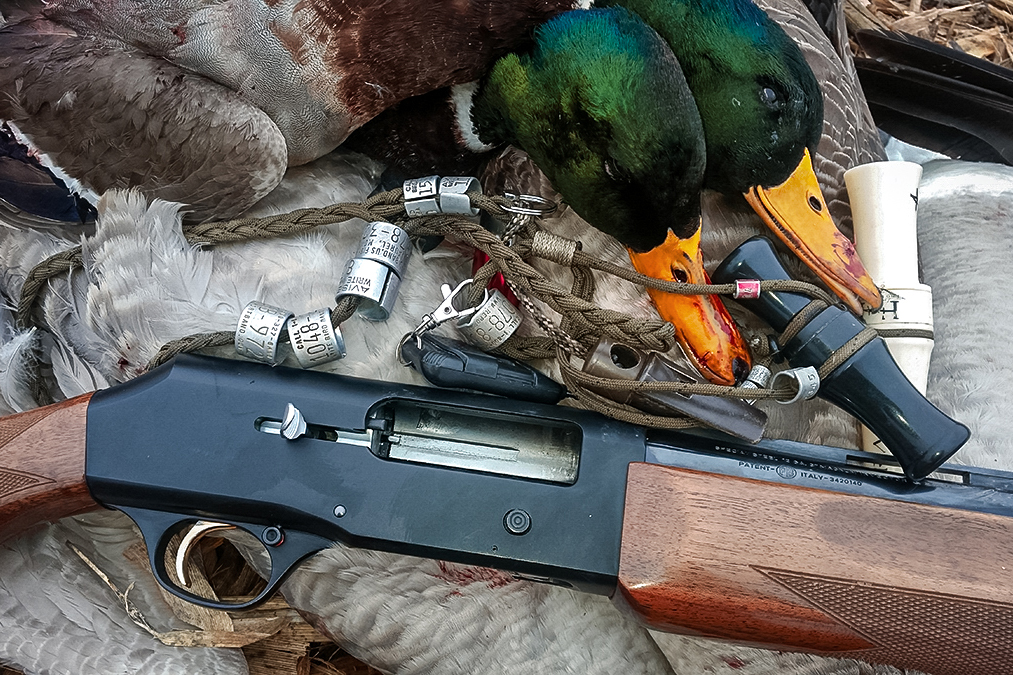

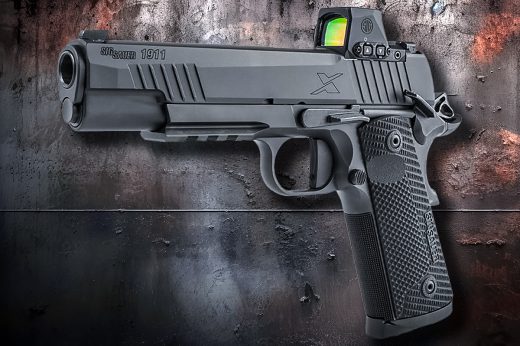
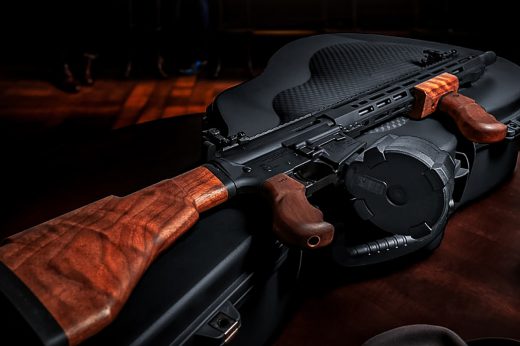
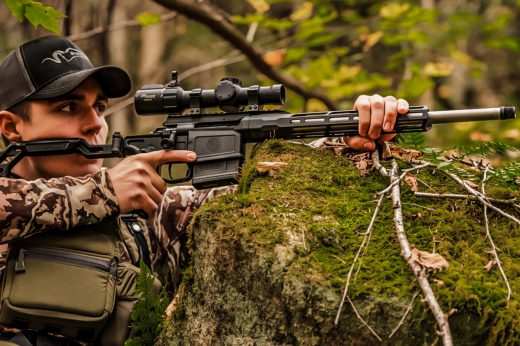


Comments